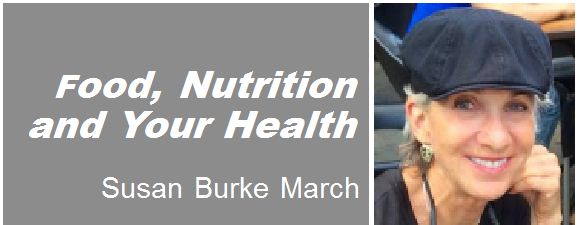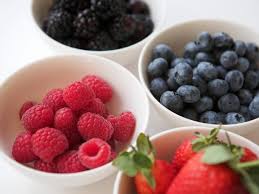Nutrition myths that persist! Busted!
There are too many nutrition myths to count, but some persist! Certainly the internet contributes to the gobs of misinformation and “theories” that abound, each week there’s a post about an “amazing” or “natural” cure that sounds legitimate, but is not. Let’s look at some popular nutrition myths and the truth behind them. I’ll bet you’ve got your own pet myths, so feel free to add them in the comments below.
Here are some of my (least!)favorite nutrition myths. . . Busted!
Most people don’t eat enough protein.
Protein’s component parts (amino acids) are responsible for many essential bodily functions, including cellular growth and repair, but even here in Ecuador, most citizens get all the protein they need. And in the U.S. protein deficiency is almost unheard of. But how much do you need?
Most people need about 1 gram per kilogram of body weight daily — but some research shows that for older people (50-plus), 1.5 g/k could be beneficial. Some experts recommend at least 10 to 35% of your daily calories come from protein, but it doesn’t have to come from animals: many vegetables offer generous amounts of protein, and some providing as much as 2 g per serving. Calculator.net will calculate how much you need, just click here.
The Takeaway: Vitamin B-12, an essential vitamin (essential means that our bodies don’t make it and we must obtain it from our diet) is not found in plant foods. So, if you’re a vegan and avoid all foods from animal sources (meat, fish, dairy, eggs) be sure to eat foods enriched with vitamin B-12, such as whole-grain bread and cereals or take a supplement. Quinoa, chia and soy, are all “complete” proteins, meaning they contain all nine essential amino acids. Other plant foods rich in a variety of amino acids are all legumes, nuts, and whole grains.
To build bigger muscles, eat more protein
And while we’re on the subject of protein, let the expert bust the muscle myth! My colleague Nancy Clark, internationally-known sports nutritionist, author and consultant to the Boston Red Sox and Boston Celtics, explains that since the body can utilize only about 20 to 25 grams of protein at one dose, and you won’t build bigger muscles by eating a ‘slab ‘o beef for dinner or by downing a hefty protein shake for breakfast. Nope…you can’t eat your way to bigger muscles! You build muscles with consistent, progressive weight training, and you need carbohydrates to fuel those muscles.
 The Takeaway: Whole, not refined carbs including whole oats, sweet potatoes (camotes), potatoes, and quinoa are great energy foods: they are good sources of potent nutrients including iron, magnesium, potassium, and yes, protein. They are low-glycemic carbs, provide sustained energy, will not elicit an insulin surge, which drives excess energy to fat stores.
The Takeaway: Whole, not refined carbs including whole oats, sweet potatoes (camotes), potatoes, and quinoa are great energy foods: they are good sources of potent nutrients including iron, magnesium, potassium, and yes, protein. They are low-glycemic carbs, provide sustained energy, will not elicit an insulin surge, which drives excess energy to fat stores.
Nancy advises that someone like a bodybuilder who is trying to build muscle, eat a balanced diet, with whole grains, fruits, and veggies, and create the energy you need to lift those heavy weights. Lean protein from animals can be healthy, but more is not better. To learn more: How to Calculate Your Protein Needs
People with diabetes can’t eat fruit or carbs
This myth persists, but it’s easy to bust – just remember that all carbohydrates are not equal in terms of health. Refined and processed carbs from “white foods” such as white bread, rice, and pasta hit your bloodstream quickly, spiking insulin and causing dysbiosis. Sugary beverages are the worst for your health. Sugary drinks, sweet tea, soda, even 100% fruit juice, require immediate insulin release from the pancreas, contribute copious calories, making them especially bad for people with diabetes.

All berries are full of fiber and low in fructose.
Since fruit contains natural sugar (fructose), the assumption is that people with diabetes should avoid all fruit, and some vegetables too. But many have a low glycemic load which means that they don’t impact blood sugar, and in fact, contain a lot of beneficial fiber, especially good for nourishing the gut microbiome, which is essential for immunity and regeneration.
The Takeaway: The fiber in fruits and vegetables are especially helpful for everyone’s health, including people with diabetes. Portion size is paramount, and like protein, eat according to your unique needs. Eat fruits and vegetables whole: that is, don’t drink them, eat them scrubbed and for the most part, unpeeled; fiber is very helpful in keeping your blood sugar stable. The best fruits for people with diabetes are berries — all types, from mora to blueberries, strawberries, and blackberries. Eat berries with Greek yogurt (3/4 cup each) for a high fiber/high protein snack or breakfast.
BMI (Body Mass Index) is the best indicator of your fitness
 An athlete (or former athlete) like Arnold Schwarzenegger, “The Terminator” is a great example. At one point they published his vital statistics: 6’2” tall and 257 pounds. I used this BMI calculator to determine that Arnold’s BMI is 33!
An athlete (or former athlete) like Arnold Schwarzenegger, “The Terminator” is a great example. At one point they published his vital statistics: 6’2” tall and 257 pounds. I used this BMI calculator to determine that Arnold’s BMI is 33!
This is considered “obese”, but Arnold wouldn’t like it if you called him fat.
That’s the problem with BMI. It’s a reasonable tool to estimate risk for disease associated with being overweight for the average person, but since muscle is heavier than fat, it’s not accurate for everyone. Body fat percentage is a more accurate predictor of health. If we used BMI to estimate Arnold’s fitness, we’d be wrong. His body fat percentage is only about 7%. That’s pretty darn lean.

BMI or Waist Size? Which is a more accurate measurement of health?
Waist size is a better measurement of health and risk for diseases associated with overweight or obesity such as type 2 diabetes, and heart disease. A recent (2019) study confirmed that where you carry your weight is more important than BMI for assessing health risk and abdominal obesity indicates that visceral fat can infiltrate organs and contribute to a higher risk for obesity-related cancers.
The Takeaway: Measure your waist-to-hip ratio (WHR).
Compare the smallest measurement around your waist (near the belly button) to the largest around your hips. This estimates mesenteric fat, which is thought to be the culprit for much of the health risks related to being overweight. A ratio of more than 0.8 for women and 0.95 for men indicates a risk.
Aim for a healthy weight, not a skinny weight. Other numbers are just as important in estimating your healthy. Keep your blood pressure, cholesterol and blood sugar within normal limits, eat healthfully and stay active.
What’s Your Favorite Nutrition Myth? Write to me at SusanTheDietitian@gmail.com
Sources:
Kaiser Health News. Why older adults should eat more protein (and not overdo protein shakes.)
VerywellFit.com. How to determine how much protein to eat for exercise.
The Telegraph (UK). Measure waist size, not BMI to gauge risk of early death, new study shows.
______________________________
Susan Burke March is a Registered and Licensed Dietitian, a Certified Diabetes Educator who specializes in smart solutions for weight loss and diabetes-related weight management, and a Cuenca expat. Contact her at SusantheDietitian@gmail.com





















